Old Main, Marshall University
Introduction
Author-Uploaded Audio
Welcome to Marshall University from Brad Smith
Text-to-speech Audio
Images
The most distinguishable feature of Old Main today is its Gothic, castle-like main entrance, which was added in 1907.
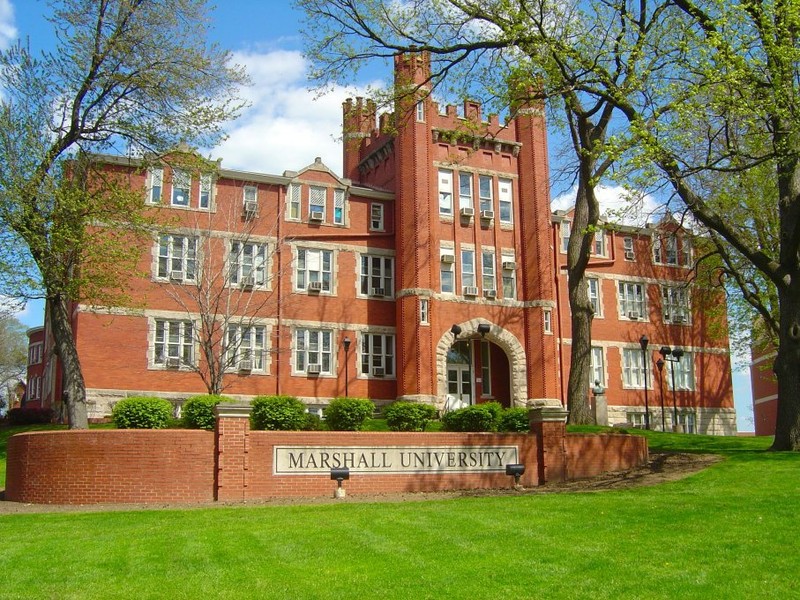
Old Main circa 1870. This portion is the oldest-surviving section of the building, while the 1838 and 1856 sections were later demolished.

Old Main sometime between 1899 and 1905. Note the bell tower in front of the 1870 section.
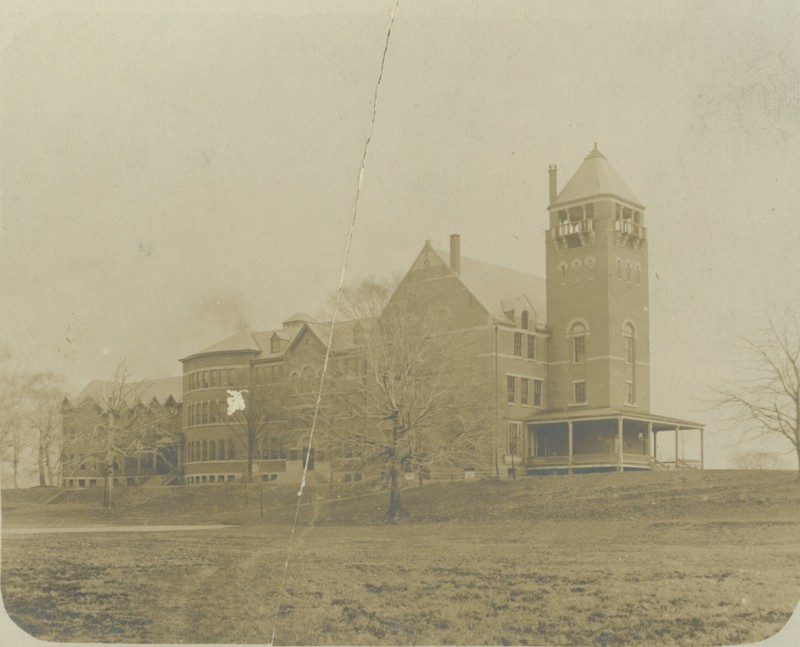
This 1910 postcard shows Old Main with its new Gothic-style main entrance. The exterior of the building has remained largely the same since 1907.
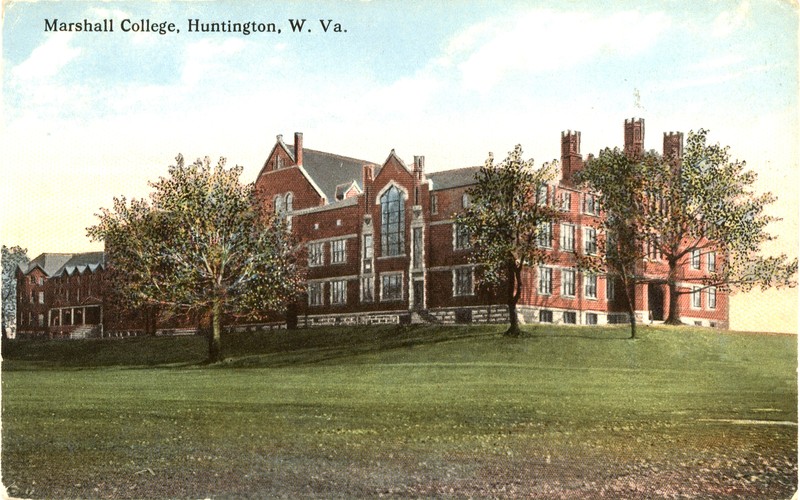
Old Main once housed all of Marshall's classrooms, such as this art room in 1907.
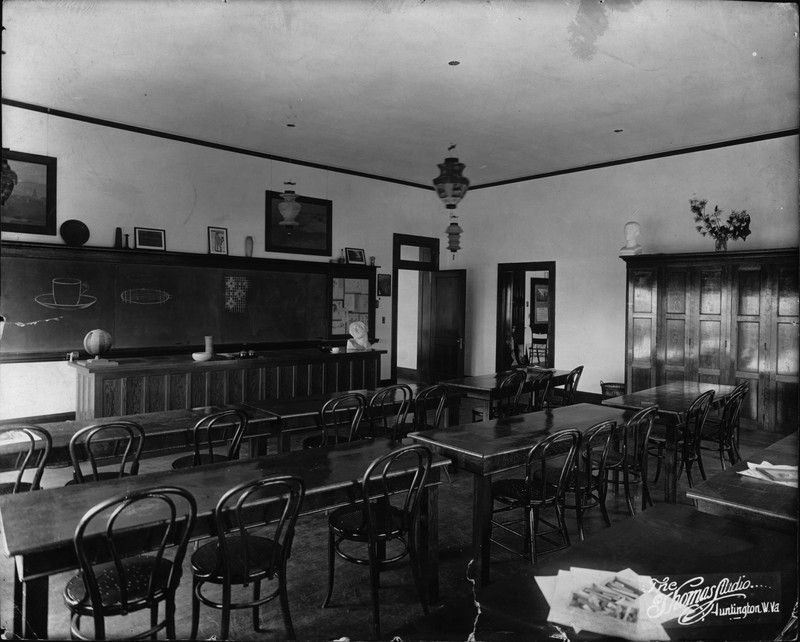
The 1907 expansion included the addition of a 1,000-seat auditorium used for student productions and other shows. It was shuttered in 1992 with the opening of the Joan C. Edwards Performing Arts Center.
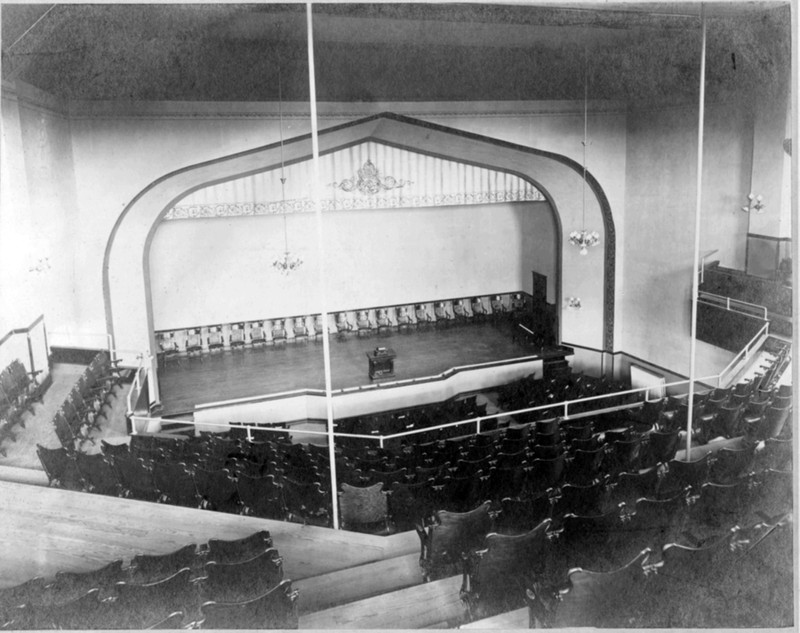
Backstory and Context
Author-Uploaded Audio
History of Old Main by Jerome Gilbert and Doris C. Miller
Text-to-speech Audio
The small hill occupied by Old Main was originally known as Maple Grove. The surrounding area was occupied by forests and farmland, and the nearest settlement was the town of Guyandotte, two miles to the east. In the 1820s or 30s local farmers cleared some of the land and built Mount Hebron Church. This modest, one-room log building housed various denominations and also served as a subscription school. In 1837 a group of locals including John Laidley and William Buffington made efforts to establish a proper school at the site. On March 30, 1838 the Virginia General Assembly formally incorporated Marshall Academy. Laidley had the school named in honor of his acquaintance, Chief Justice John Marshall, who had died in 1835.
The Trustees of Marshall Academy purchased a plot of land at Maple Grove from James Holderby for $40. In 1839 they constructed Marshall’s first building, a two-story, four-room brick structure. It housed classrooms and a chapel. In 1846 Virginia cut its funding for the Academy, severely impacting the quality of the school. In 1850 the Trustees gave ownership of Marshall to the Western Virginia Conference of the Methodist Episcopal Church, South, which operated the Academy until 1858 when Virginia reincorporated it as Marshall College. By this time the school had outgrown its original building, and in 1858 a three-story addition was built on the west side. The first floor served as a chapel, while the second and third floors (incomplete until 1867) housed dormitories and extra classrooms.
Marshall Academy closed at the beginning of the Civil War in 1861. For the next several years school trustee John W. Hite lived in the building; in 1863 his daughter Salina Hite Mason purchased it in a public auction. In 1867 the State of West Virginia bought back the property and reopened it as the State Normal School of Marshall College. The first normal school in the new state, Marshall focused on training teachers. The school building expanded again in 1870 with a new three-story addition built on the west side. The expansion included a bell tower, a stone basement, and a veranda encompassing the entire northern side of the building. The 1870 addition is the oldest surviving portion of Old Main today.
Marshall steadily grew over the next several decades in tandem with the development of Huntington. A separate, three-story building was constructed about seventy-five feet west of the original building in 1896 and housed the principal’s office, a study hall, meeting hall, library, and classrooms. The following year West Virginia appropriated more funding to demolish the 1839 and 1856 portions of the original structure and construct a new building on the same spot. This new addition was attached to the 1870 portion and known variously as Normal Hall, Ladies Hall, and College Hall. It originally served as women’s dormitories and living space for the principal and teachers. In 1899 Marshall constructed an annex which joined together the 1870 and 1896 buildings into one large structure.
The rapid expansion of Marshall in the early 1900s quickly made the new additions of the 1890s insufficient for the school’s needs. In 1907 the final addition to the building was constructed on the west side. The large, Tudor Gothic style building was adorned with a tower and turrets, and contained a new library, auditorium, President’s Offices, laboratories, and rooms for the Biology, Geology, Mathematics, Music, and Art Departments. Since 1907 the configuration of the building has remained largely the same, although the interior has underwent numerous renovations. In 1937 the structure was first referred to as “Old Main” in the Marshall College Catalog.
In the decades following 1907 new buildings were gradually constructed around the growing campus, eliminating the need for classrooms, dormitories, and other student facilities within Old Main itself. Today the building serves as an administrative hub, housing offices for many of Marshall’s organizations. Old Main was listed on the National Register of Historic Places in 1973.
Sources
Bleau, Edward R. “Old Main – Marshall University.” National Register of Historic Places Nomination Form. December 28, 1972. Accessed December 18, 2019. https://www.wvculture.org/shpo/nr/pdf/cabell/73001899.pdf.
“A Brief Chronology of Old Main.” Marshall University Special Collections. Accessed December 18, 2019. https://www.marshall.edu/special-collections/old_main/chronology.asp.
Casto, James E. “Lost Huntington: Old Main auditorium.” Herald-Dispatch. April 11, 2016. Accessed December 18, 2019. https://www.herald-dispatch.com/special/lost_huntington/lost-huntington-old-main-auditorium/article_e850f91f-a789-5397-bb47-c771d5db7c04.html.
Lewis, Virgil A. “A History of Marshall Academy, Marshall College and Marshall College State Normal School (West Virginia).” 1910-1912. Accessed December 18, 2019. https://www.marshall.edu/special-collections/old_main/VALewis0620A-a.pdf.
“Marshall University Official History.” Marshall University. Accessed December 18, 2019. http://www.marshall.edu/muhistory/.
Miller, Doris Copley. Interview by Rosemary Barcello. April 23, 1974. Marshall University Special Collections, OH64-109. Huntington, WV.
Teel, Cora P. “Marshall University.” e-WV: The West Virginia Encyclopedia. December 5, 2017. Accessed December 18, 2019. https://www.wvencyclopedia.org/articles/1529.
Thackston, B. H. “A Short History of Marshall College.” From the 1900-1901 Marshall College Catalogue. Accessed December 18, 2019. https://www.marshall.edu/special-collections/old_main/ThankstonHistory.pdf.
Marshall University Special Collections
Marshall University Special Collections
Marshall University Special Collections
Marshall University Special Collections
Marshall University Special Collections
